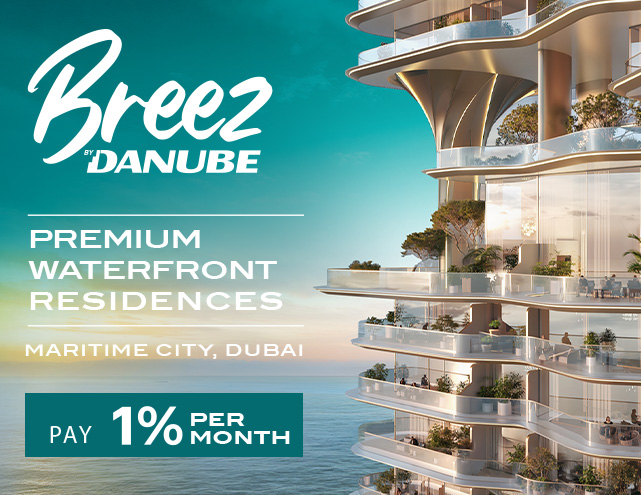Understanding the Current Landscape: Dubai’s High-Rise Boom and Emerging Competitors
Dubai’s skyline continues its relentless transformation, with new high-rise developments launching at an unprecedented pace. The emirate’s real estate market has witnessed a surge in tower projects, intensifying competition among established developers and new market entrants. This dynamic environment presents both challenges and opportunities for industry leaders like Danube Properties, requiring strategic analysis and adaptive positioning to maintain market dominance.
The current high-rise boom reflects Dubai’s sustained appeal as a global investment destination, driven by favorable regulations, strategic location, and robust infrastructure development. However, this growth has also attracted numerous competitors, each vying for market share with innovative designs, competitive pricing, and attractive payment plans.
Methodology: Analyzing Competitor High-Rise Project Launches and Market Share
Understanding competitive impact requires systematic analysis of market dynamics, including project locations, pricing strategies, target demographics, and delivery timelines. Key metrics include absorption rates, price per square foot variations, and amenity offerings that differentiate projects in saturated markets.
Competitor analysis reveals varying approaches to market penetration, from luxury positioning to affordable housing segments. Some developers focus on prime locations with premium pricing, while others target emerging areas with value-oriented propositions. This segmentation creates multiple competitive fronts that established players must navigate strategically.
Direct and Indirect Impacts: How New Towers Affect Danube’s Project Pipeline
New high-rise launches create both direct competition for buyer attention and indirect market effects through pricing pressure and inventory expansion. Direct impacts include competition for similar buyer segments, particularly in overlapping geographical areas where projects target comparable demographics and price points.
Indirect effects manifest through market perception shifts, altered buyer expectations, and modified investment patterns. When competitors introduce innovative amenities or attractive payment structures, market standards evolve, requiring responsive adaptations from established developers to maintain competitive appeal.
The timing of competitor launches relative to Danube’s project phases also influences market dynamics. Simultaneous launches in similar segments can fragment buyer attention, while staggered releases may create momentum shifts that benefit strategic timing and positioning.
Danube’s Strategic Advantage: Innovation and Value Proposition in a Crowded Market
Danube Properties maintains distinct competitive advantages through its established market presence, proven delivery track record, and innovative approach to residential development. The company’s reputation for quality construction, timely delivery, and customer satisfaction creates significant differentiation in a market where trust and reliability are paramount considerations for investors and end-users.
Innovation remains central to Danube’s competitive strategy, encompassing architectural design, smart home integration, sustainable building practices, and community-focused amenities. These elements combine to create unique value propositions that transcend price-based competition, appealing to discerning buyers who prioritize quality and long-term value.
The company’s financial stability and established partnerships also provide competitive advantages, enabling strategic land acquisitions, favorable financing terms, and risk mitigation capabilities that newer market entrants may lack.
Mitigating Risks: Adapting Project Timelines and Offerings
Strategic risk mitigation requires flexible project planning and responsive market positioning. This includes potential timeline adjustments to optimize market entry, enhanced amenity packages to maintain competitive appeal, and pricing strategies that balance profitability with market competitiveness.
Product differentiation becomes crucial when multiple projects compete for similar buyer segments. Danube’s approach emphasizes unique selling propositions that extend beyond basic specifications to include lifestyle elements, community features, and long-term value retention that distinguish projects from commodity-oriented competition.
Market intelligence and buyer feedback integration enable real-time adjustments to project specifications, marketing strategies, and sales approaches, ensuring continued relevance in evolving market conditions.
Future Outlook: Positioning Danube Properties for Sustained Leadership
Long-term market leadership requires strategic vision that anticipates future trends while building on established strengths. Danube’s forward-looking approach encompasses emerging technologies, evolving buyer preferences, and sustainable development practices that position the company for continued success regardless of competitive pressures.
Strategic land banking, partnership development, and innovation investment create competitive moats that sustain market leadership through various market cycles. These investments enable Danube to respond to competitive challenges while maintaining its reputation for quality and innovation.
Conclusion: Navigating the Competitive Horizon with Strategic Foresight
The intensifying competition in Dubai’s high-rise market presents both challenges and opportunities for established developers. Danube Properties’ strategic response combines proven strengths with adaptive capabilities, ensuring sustained market leadership through quality, innovation, and customer focus. By maintaining strategic foresight and responsive positioning, Danube continues to thrive in Dubai’s dynamic real estate landscape, setting new standards for residential excellence while delivering exceptional value to investors and residents alike.




